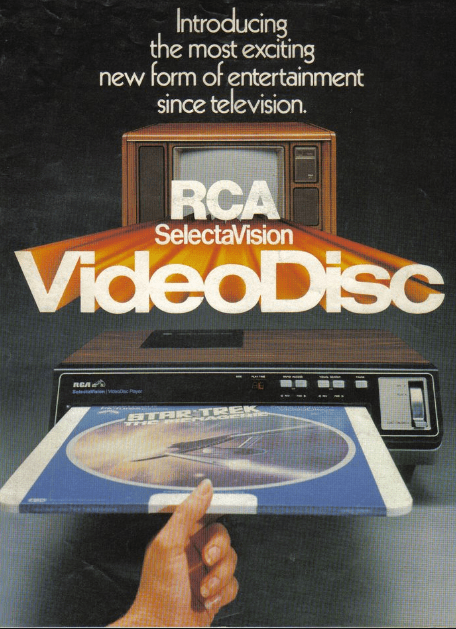
|
Getting your Trinity Audio player ready... |
The Mythbuster Series will be an ongoing project where topics of mass confusion are highlighted, broken down and explained in layman’s terms. If you have a bitcoin topic you would like clarified, send me a direct message on twitter or telegram @kurtwuckertjr, and I will add it to my own personal mempool.
What is the “fixed protocol?” What exactly was “set in stone” at Bitcoin version 0.1?
Satoshi Nakamoto was very happy to discuss his thoughts on Bitcoin’s fundamentals, game theory and software implementations in 2009-2010, and his public discussions are still freely accessible around the internet. Before they were considered “bitcoin experts,” a host of eager developers spent many hours asking questions of Satoshi.
This particular subject was raised by Gavin Andresen, who humbly started the thread saying, “So I’m writing a little tool that dissects the Bitcoin wallet.dat, mainly because I want to understand better exactly how Bitcoin works.” The crucial take-away is that Andresen was eager to understand the fundamental design of bitcoin in the face of what he assumed to be a bunch of extemporaneous scripts.
In response, Satoshi rendered one of his most often quoted lines:
The nature of Bitcoin is such that once version 0.1 was released, the core design was set in stone for the rest of its lifetime. – Satoshi Nakamoto, BitcoinTalk.com, 2010
Satoshi’s answer to Andresen’s query clarified that since bitcoin “was set in stone,” any conceivable transaction type needed to be made available in script from the beginning. He went on to specify some of what he had envisioned, and that he had an unstated vision for the future:
The design supports a tremendous variety of possible transaction types that I designed years ago. Escrow transactions, bonded contracts, third party arbitration, multi-party signature, etc. If Bitcoin catches on in a big way, these are things we’ll want to explore in the future, but they all had to be designed at the beginning to make sure they would be possible later. – Satoshi Nakamoto, BitcoinTalk.com, 2010
Today’s self-anointed Bitcoin intelligentsia use nearly constant straw man arguments against the notion of the fixed protocol. They claim that advocates for an unshakable foundation are talking about never upgrading software, or that nChain is putting an end to their Bitcoin research and development. Nothing could be further from the truth, because the implementations of the protocol are so flexible due to the nature of the available scripts inherent in Bitcoin.
Yet, the criticisms persist…
Can some explain how the BSV protocol is "set in stone" when I count upwards of three dozen consensus changes that will need to be made to "restore the original protocol". This will take many, many years and be much more invasive than anything BCH has done to date.
— Chris Pacia (@ChrisPacia) May 11, 2019
Before we explain how bitcoin is set in stone, it makes sense to define “protocol.” Interestingly enough, the etymology of “protocol” is somewhat fluid. The oldest, relevant origin of the word comes from ancient Greek. “Πρωτόκολλον” or “protokollon” was used to describe the first glued sheet of a papyrus roll – typically made with grain in the opposite direction of the rest of the document.

This “protocol sheet” gave rise to the official, stately practice of gluing paper to the front of a scroll to preserve it for seal and transport; imparting gravitas and formality to the document. Because of the early association with officiality, the word “protocol” slowly evolved to mean any set of rules—typically in stately conduct—used to guide usage or behavior. Generations later, when electronics began to communicate with one another, “protocol” evolved a bit more to apply to the language or rules that allowed machines to interface with each other even when manufactured by multiple, and often competing, entities.
So, why lock down a protocol?
In short, floating standards lead to format wars—which are bad for business. Fixed protocols, on the other hand, allow entrepreneurs to focus on creating commercially viable consumer products and services. When customer-facing businesses do not have to worry about a change in the underlying standards upon which their businesses are built, they flourish!
History has many examples of this: VHS vs Betamax, Laserdisc vs CED vs DVD, LP vs 45, Blu Ray vs HD-DVD… Ultimately, the winners of these sorts of protocol wars captured massive market share and created an incredible amount of economic value – while the losers died and were mostly forgotten.

So, the better protocol always wins?
The deciding factor is not often based on some technical aspect of the protocol. Betamax had better picture quality than VHS, for example, but the VHS/VCR protocol won that format war because it was more simply implemented, and it had larger capacity which allowed users to watch a feature length movie at home.
It was tailored to common behavior, whereas Sony Betamax was pushed on a niche consumer segment who wanted higher quality video and did not mind buying two tapes per film, thus losing convenience and spending more money to do the same thing that VHS did for faster and cheaper.
The niche nature of Betamax pushed away movie studios who adopted the cheaper, easier-to-use VHS format—showing that user-facing content, rather than protocol, was a deciding factor in the war.
The driving force of a victorious protocol standard is the value of what can be built upon it; meaning that if a fixed protocol lays the foundation for valuable content, then it is more likely to be successful than a protocol that cannot deliver utility to the end-user. And this is where Bitcoin SV shines over its competitors: simple protocol, scalable, easy-to-use and conducive to higher level business development.
Once protocols are established, how can we upgrade?
Quite simply, actually. A fixed protocol is easier to upgrade than a protocol with standards that are up for debate. VHS established a standard for tape size and few other specifics, but there was an immense flexibility in many of the non-protocol factors. This allowed the creation of compatible Super-VHS, ADAT, Super VHS-C, W-VHS, Digital-VHS (high-definition) formats that all had improved functionality while abiding to the same rule set established by the VHS protocol, and they were easy to push out because they conformed to flexible standards.
Another example is the automobile. The protocols of road and automobile safety curate a standard, predictable range for what defines an “automobile.” Webster’s Dictionary states that an automobile is “a passenger vehicle, usually four-wheeled, propelled by an engine or motor that is part of it, esp. an internal-combustion or electric engine, and meant for traveling on streets or roads; motorcar” which gives flexibility on implementation that ranges more broadly than the Ford Model T and the Tesla Model S, but if someone adds wings, we no longer have an automobile; but an airplane. And if two wheels are removed, we have a motorcycle!

So is Bitcoin fixed? Is SV node set in stone?
Bitcoin is a fixed, defined protocol. Unfortunately, nobody is running an implementation that follows all of the Bitcoin rules! Bitcoin SV Node was inherited from Bitcoin ABC, which was inherited from Bitcoin Core, and as such, still carries baggage from both shifting protocols. However, Bitcoin SV Node is the only implementation of bitcoin being worked on in a way that restores bitcoin’s complete protocol so that it can be locked down and built upon for the foreseeable future.
Genesis is a big step in that direction—likely the penultimate step before the final bitcoin rule is permanently etched into code. When the final protocol change restores bitcoin, the next generation of entrepreneurs can rely on a stable protocol and implement their own businesses atop the only proof of work ledger that can scale.
So next time someone criticises setting bitcoin in stone, let them know that fixed protocol standards are the cornerstone of all of Western society, starting with the Greeks, and that without these immovable rules, technological advancement would have fallen into complete chaos sometime between the creation of Karl Benz’ first Motorwagen and RCA’s first vinyl record.

 11-22-2024
11-22-2024


